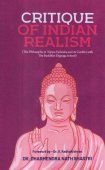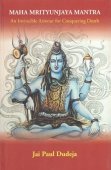Atom: 1 definition
Introduction:
Atom means something in Hinduism, Sanskrit. If you want to know the exact meaning, history, etymology or English translation of this term then check out the descriptions on this page. Add your comment or reference to a book if you want to contribute to this summary article.
In Hinduism
Yoga (school of philosophy)
Source: ORA: Amanaska (king of all yogas): A Critical Edition and Annotated Translation by Jason BirchAtoms are denoted by the Sanskrit term Aṇu or Aṇutva, according to the Amanaska Yoga treatise dealing with meditation, absorption, yogic powers and liberation.—Accordingly, as Īśvara says to Vāmadeva: “[...] [Now], I shall define the nature of that highest, mind-free absorption which arises for those devoted to constant practice. [...] By means of an absorption in the undivided self for twenty days, the [Yogin] obtains the Siddhi called Laghimā by which he possesses the weight of an atom (aṇutva) [yayāṇutvasya]. [...]”.

Yoga is originally considered a branch of Hindu philosophy (astika), but both ancient and modern Yoga combine the physical, mental and spiritual. Yoga teaches various physical techniques also known as āsanas (postures), used for various purposes (eg., meditation, contemplation, relaxation).
See also (Relevant definitions)
Starts with: Atomukaciram, Atomukam, Atomuki.
Ends with: Kidirkatom.
Full-text (+306): Paramanu, Anu, Dvyanuka, Trasareṇu, Pilu, Anumatra, Parimandalya, Tryasarenu, Tanmatra, Kanada, Sukshma, Anurenu, Anutva, Karanakarana, Milita, Truti, Samshlishta, Samshlishtamana, Ekeka, Samsparsha.
Relevant text
Search found 169 books and stories containing Atom; (plurals include: Atoms). You can also click to the full overview containing English textual excerpts. Below are direct links for the most relevant articles:
Nyaya-Vaisheshika categories (Study) (by Diptimani Goswami)
The Atomic Theory < [Chapter 3 - Dravya (Substance)]
Nature of Viśeṣa (particularity) < [Chapter 5 - Sāmānya and Viśeṣa]
Qualities (6): Parimāṇa (Dimension) < [Chapter 4 - Quality and Action]
The Tattvasangraha [with commentary] (by Ganganatha Jha)
Verse 1990-1992 < [Chapter 23 - External World]
Verse 1993-1997 < [Chapter 23 - External World]
Verse 550 < [Chapter 10 - The Examination of the First Category—‘Substance’]
Maha Prajnaparamita Sastra (by Gelongma Karma Migme Chödrön)
2. Debate with the Atomist < [Part 12 - Non-existence of the outer object]
Part 12 - Non-existence of the outer object < [Chapter XX - The Virtue of Generosity and Generosity of the Dharma]
Appendix 1 - The four great elements (mahābhūta) < [Chapter XLIX - The Four Conditions]
A History of Indian Philosophy Volume 1 (by Surendranath Dasgupta)
Part 14 - The Tanmātras and the Paramāṇus < [Chapter VII - The Kapila and the Pātañjala Sāṃkhya (yoga)]
Part 13 - The Nyāya-Vaiśeṣika Physics < [Chapter VIII - The Nyāya-Vaiśeṣika Philosophy]
Part 17 - Pudgala < [Chapter VI - The Jaina Philosophy]
A study of the philosophy of Jainism (by Deepa Baruah)
Chapter III.e - The concept of matter or Pudgala < [Chapter III - Categories]
Chapter III.c - Concept of relation (sambandha) < [Chapter III - Categories]
Chapter III.f - Prabhācandra’s view regarding matter < [Chapter III - Categories]
Tattvartha Sutra (with commentary) (by Vijay K. Jain)
Verse 5.25 - The two divisions of the matter (pudgala) < [Chapter 5 - The Non-living Substances]
Verse 5.26 - The origin of molecules (skandha) < [Chapter 5 - The Non-living Substances]
Verse 5.37 - The process of combination < [Chapter 5 - The Non-living Substances]
Related products



